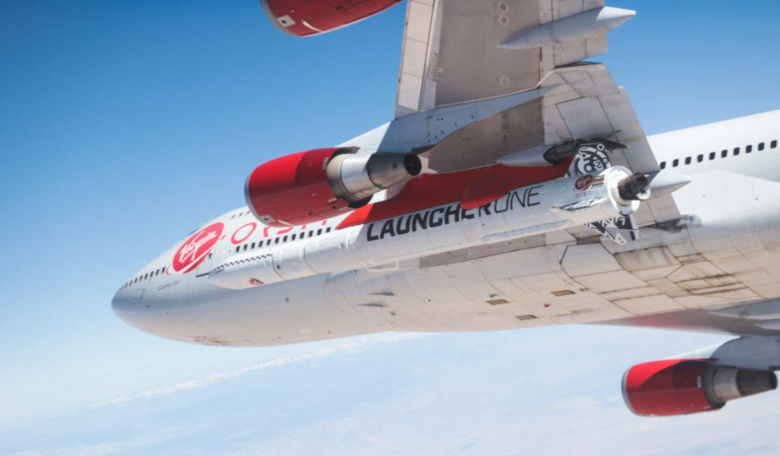Virgin Orbit have announced that their LauncherOne air-launched vehicle will be ready to take its first orbital test flight this Sunday, with a four-hour window open the next day should conditions not be exactly right.
“As this is a maiden launch, we're taking every precaution to maximize our chances for success — so the launch window may shift to accommodate for inclement weather or minor technical adjustments. We have a backup window for launch on the 25th", Virgin Orbit said via Twitter.
Designed to deliver small satellites into orbit, the LauncherOne vehicle will ignite its engine in mid-air for the first time after being released from under the wings of “Cosmic Girl”, the company’s modified Boeing 747 carrier aircraft.
Around five seconds after release, the rocket’s kerosene-fuelled NewtonThree engine will ignite powering its first stage for a three-minute burn.
The instant the engine ignites, Virgin Orbit will have done something no one has ever done before — lighting an orbital-class, liquid-fuelled, horizontally-launched vehicle in flight, Richard Branson’s firm said in a statement Wednesday.
After separation of the first stage, the smaller NewtonFour engine powering its second stage will ignite for six minutes. The rocket’s payload fairing will then separate less than 30 seconds later.
If all has gone according to plan by this time, LauncherOne will coast for 22 minutes before releasing its payload into low Earth orbit.
“If LauncherOne reaches an altitude of 50 miles on this mission, it will be the first time this kind of launch system has reached space.”
The company are however cautiously optimistic, about the launch demo.
Although the event marks the culmination of a five-year-long development programme, there’s a long list of factors that need to line up in order to make it all the way, Virgin Orbit say.
And, with maiden flights statistically ending in failure about half of the time, the odds are not truly in their favour. “Should we defy the historical odds and become one of those exceedingly rare teams to complete a mission on first attempt, we will deploy a test payload into an orbit, take our data, and then quickly de-orbit so as not to clutter the heavens,” say representatives of the company.
Virgin Orbit plan to continue the mission for as long as practical in order to collect the maximum amount of data possible.
The company says it plans to build 24 rockets on an annual basis at its operations in Southern California; a manufacturing feat that will be made possible thanks to a partnership with DMG Mori, which saw Virgin Orbit become the owner of one of the first hybrid additive-subtractive manufacturing machines in the world.
This revolutionary technology saves the company months in production cycles, say Virgin Orbit, reducing the time to craft an engine thrust nozzle by an order of magnitude.
Should the test launch be a success, Virgin Orbit has said that it will move into operational missions, starting with one for NASA’s Venture Class Launch Services program carrying a collection of smallsats.
Delivering CubeSats and microsatellites to orbit was the impetus behind the creation of LauncherOne says Virgin Orbit, who say that our exploration of space has been limited by expensive and inaccessible launches of small satellites in the past.
Along with LauncherOne, this niche in the market is now being filled with orbital vehicles such as Rocket Lab’s Electron booster, who will also be competing for contracts from NASA, the US military and other commercial companies.
With the countdown now on, due to restrictions imposed by the coronavirus pandemic, press will not be invited to the company’s Mojave facility to watch the event, neither are they planning to livestream the launch. Instead, Virgin Orbit plans to capture the flight from the rocket’s release to its ascent into space via video cameras mounted on a chase plane and on the LauncherOne vehicle itself.
Near real-time updates will then be provided via Virgin Orbits social media sites.
If you've enjoyed reading this article, please consider subscribing to ROOM Space Journal to gain immediate and full access to the latest magazine feature articles and receive your own print and/or digital copies of ROOM magazine delivered direct to your door or electronically.











